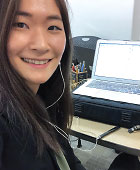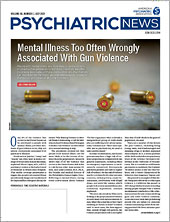Amid the COVID-19 pandemic, prospective residency applicants were notified that the 2020-2021 interview season would be completely virtual. This meant no expenses for travel accommodations—but also no in-person tours, resident socials, or faculty interviews. I had heard that based on prior data, the most important factor driving applicants’ rank list order was the culture of the program—the people, vibe, overall fit. Ironically, this was the main aspect of our experience that would not be available due to the pandemic. How could I tell if a program was the right “fit” through a webcam? If I’m excited about a program, how can I portray that through this digital platform? Do I even have the right webcam, or will I look like a pixelated Minecraft character on the other end? These were some of the many questions my friends and fellow applicants would share as we prepared ourselves for our first virtual residency interviews.
As I progressed through my interviews, I found a gradual shift in my questions—they went from focusing on how I was portrayed to focusing on the program and its residents. It was as if the hot seat was being shared by both sides of the Zoom call. While I wanted to share my experiences and passions, I also wanted to ensure that I was getting as much information as I could so that I could rank the programs to the best of my ability. This was particularly important to me, given my specific interest in exploring the intersection between psychiatry and music. Asking specific, appropriate questions, however, was also a learning experience. I decided to share a few of my favorite questions, how I framed them, and sample responses that ultimately determined how I ranked my programs.
“Can I still do the things that I love and enjoy as a resident at your program?” translated into “Outside of medicine and psychiatry, how do you spend your time?”
These questions led to some fun, interesting answers: weekend getaways, hiking trails, golf courses, foodie adventures, dog parks, and more. I recall one resident sharing how he checked the local weekly newsletter for events happening nearby, and he found himself knitting with the neighborhood grandmas one weekend. A resident in another program shared how her passion for integrative medicine led to a community-based initiative that she was designing with faculty and resident support. Through these conversations, I could raise one of the things that bring me happiness: music. Do residents or faculty members perform throughout the year? If so, great! If not, would the program be welcoming of initiatives to bring together physician musicians to promote wellness? I wanted to know if I could also add a splash of color by contributing my own passions to the program.
“Will I be able to develop strong professional relationships with faculty mentors?” translated into “Have you been able to find mentors in your area of interest? How difficult or easy was it to build those relationships?”
I found that the answers depended on multiple factors. Those who said yes often described how diverse the faculty is, which is helpful for those who have specific interests. Yet, having a large diverse faculty didn’t necessarily guarantee mentorship. One resident shared how he struggled to find a faculty member who had the time to collaborate with him on projects and provide advising. I then found myself asking if there were any current projects related to music and if there were specific faculty members who were also interested in it. Interestingly, I found a stark contrast in responses, as some would say, “Yes, absolutely. Here are the names of faculty members you can contact.” Others would say, “No, but I’m sure it could make for a great poster!” This made me wonder what my aspirations were and what I would ultimately hope to accomplish during my residency.
“Will I fit in?” translated into “If you were to describe your residency cohort in a few words, what would they be?”
I found that each time I asked this question, I got different answers. “Community focused.” “Love teaching.” “Research oriented.” “Active and passionate.” “Value work/life balance.” “Quirky but fun.” Hearing a resident come up with a set of words and be affirmed by another resident made it that much more genuine and believable. What types of residents and lifelong friends do I want to surround myself with for the next four years? While this was the most challenging question to answer given the virtual interview platform, oftentimes I could see the enthusiasm (or not) in the residents’ responses. The concept of fitting into residency extends not only to the people, but also to the essence and mission of the program and institution.
“There’s this one thing about the program that I’m not too enthused about. Am I just magnifying something that’s not that big of a deal?” translated into “I don’t like the term red flag, so let me phrase it this way—did you notice any pink flags about this program when making your rank list? If so, how did that perception change once you started residency?”
This was my favorite question to ask because in addition to a couple laughs from the thought of a pink, not red, flag, it also allowed for honest responses. The residents often took a few seconds to think back to their interview season and to the very time when they were in my shoes interviewing and creating a rank list. Though their interviews were in person, I found it comforting to see there were overlaps between the pink flags we noticed.
To take it a step further, it was enlightening to learn how those perceptions changed once the residents began their residency. Did they find out that it wasn’t quite as concerning as they assumed? If it was an issue, did the program open its ears to feedback and invite change? Through these conversations, I found that residency programs should constantly be evolving and improving for the betterment of its residents, faculty, and patients.
Last month I started psychiatry residency at the University of Rochester Medical Center (URMC). Though everyone’s initial reaction when I shared the news was “Congrats! ... But it’s cold!,” my interview was nothing but warm and welcoming. URMC, the birthplace of the biopsychosocial model, as well as its mission statement of “Meliora: Ever Better,” is reflected in its astounding medical campus. I can’t forget to mention its ties with the Eastman School of Music, a renowned conservatory that allows residents to audit courses and interact with professional musicians.
To have participated in a completely virtual residency interview season was an accomplishment in itself—and I am so proud of my colleagues and friends who adapted and made the most of these moments through Zoom. By learning about these programs, I was newly inspired and excited to enter this incredible field of psychiatry. With so many possibilities and a door wide open, I cannot even begin to describe my excitement for what is to come. ■

